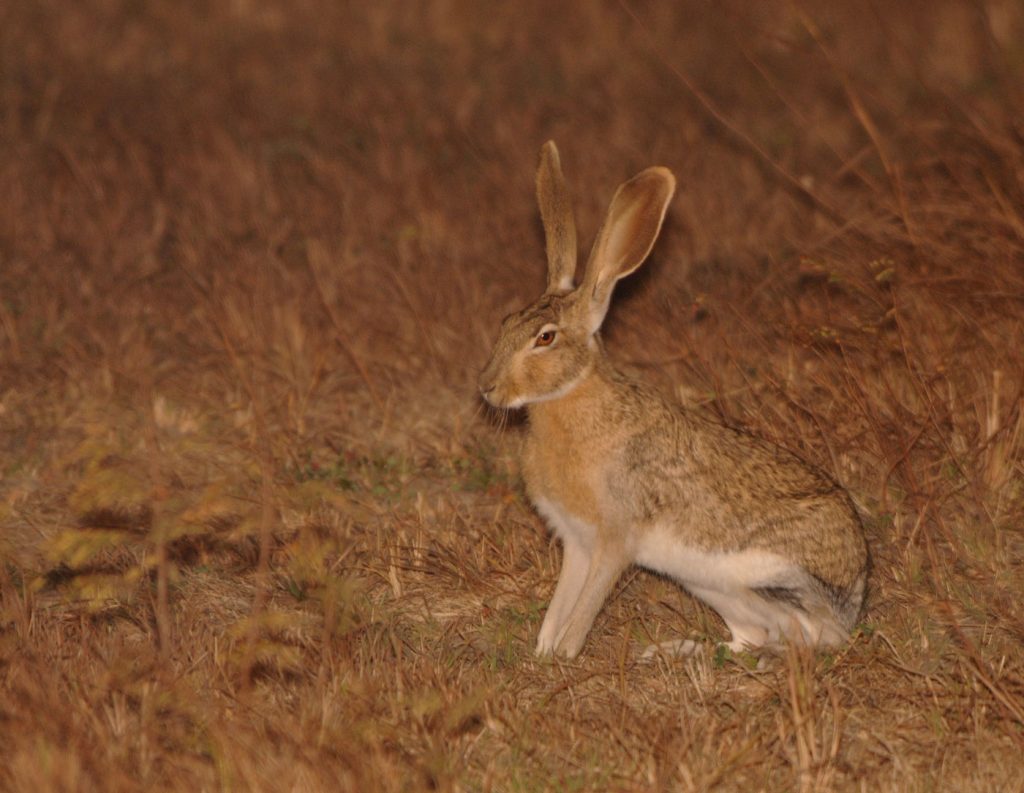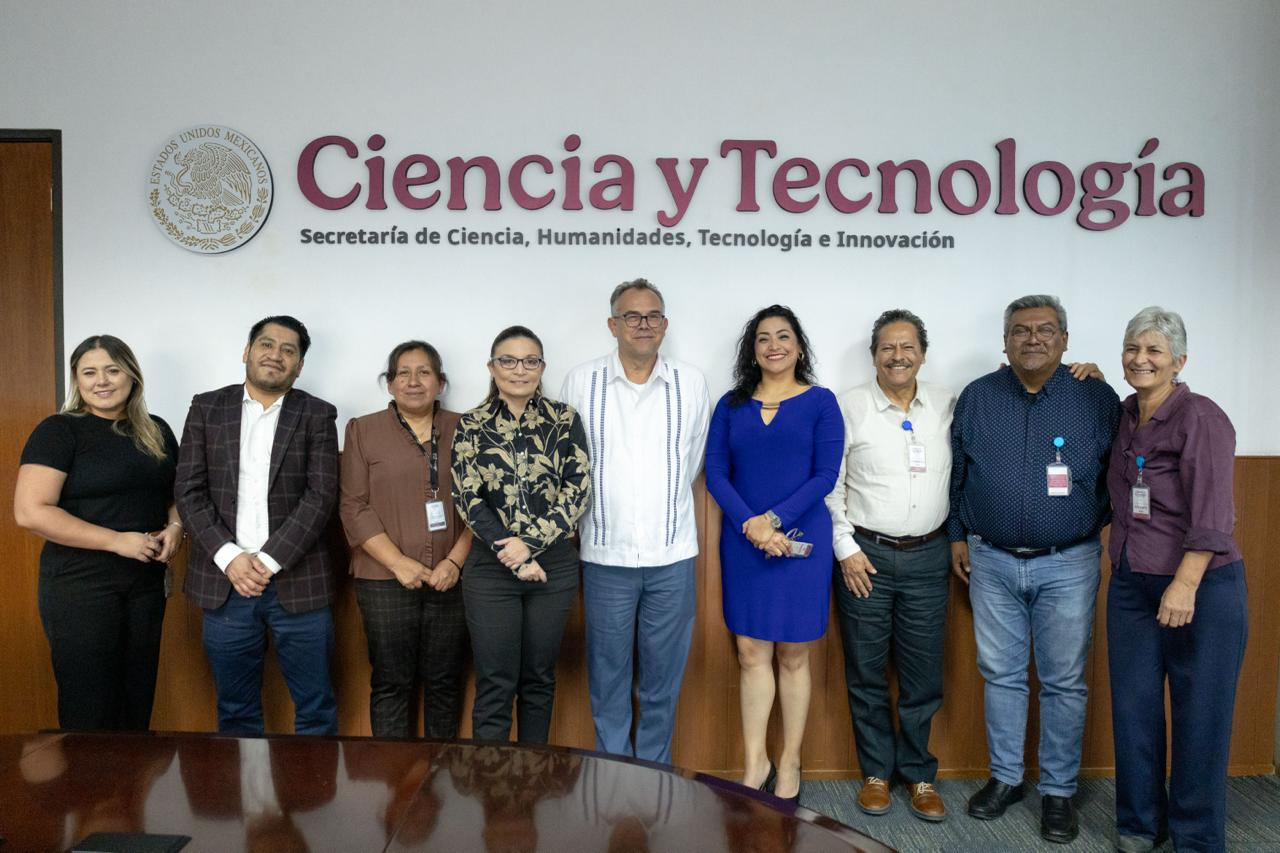In the study Influences of long-term changes in land cover on mammal populations: an example from Mexico, academics from the Department of Biodiversity Conservation of El Colegio de la Frontera Sur (ECOSUR), Consuelo Lorenzo, Eugenia Sántiz, Jorge Bolaños and Darío Navarrete demonstrate that the loss of vegetation cover in the Isthmus of Tehuantepec, Oaxaca, Mexico, has led to a general decrease in the population density of the Tehuantepec jackrabbit (Lepus flavigularis) and the eastern cottontail rabbit (Sylvilagus floridanus), being more drastic in the first species; instead, remains stable in its carnivorous predators, the gray fox (Urocyon cinereoargenteus) and the coyote (Canis latrans).
The Tehuantepec jackrabbit is considered as endangered at international level according to the red list of the International Union for Conservation of Nature and Natural Resources (IUCN).
 Tehuantepec jackrabbit (Lepus flavigularis),
Tehuantepec jackrabbit (Lepus flavigularis),
Montecillo Santa Cruz, Oaxaca. Photo: Randall Babb
 Coyote (Canis latrans), Montecillo Santa Cruz, Oaxaca. Photo: Randall Babb
Coyote (Canis latrans), Montecillo Santa Cruz, Oaxaca. Photo: Randall Babb
Through the study, the authors identified changes in the vegetation cover and the land use in the southern part of the Isthmus of Tehuantepec in Oaxaca, Mexico, through the analysis of satellite image of 2001 and 2014; and observed that in response to these changes there were fluctuations in the population density of mammal species from 2001 to 2016.
They warned that over 16 years, the types of land use – burned areas, human settlements, seasonal agriculture – increased its surface area, contrary to the vegetation cover – savannahs, low deciduous forest, secondary vegetation and grasslands – that decreased.
 Burned areas, Montecillo Santa Cruz, Oaxaca. Photo: Jorge Bolaños
Burned areas, Montecillo Santa Cruz, Oaxaca. Photo: Jorge Bolaños
They indicate that the main causes of changes in vegetation cover and land use are the growth of the human population – which increases the demand for space for housing and food production – as well as a poor agricultural management, particularly in relation to livestock rearing and uncontrolled burning of grasses to promote new growth of grazing pasture for cattle.
 Watermelon farming, Montecillo Santa Cruz, Oaxaca. Photo: Eugenia Santiz
Watermelon farming, Montecillo Santa Cruz, Oaxaca. Photo: Eugenia Santiz
The conclusion of the study is that the change in the land use has led to habitat reduction, degradation and fragmentation, directly affecting the vegetation cover as well as the availability of food for wild animals.
Based on their findings, academics recommend to the authorities, the establishment of a communal ecological reserve in the study area to implement appropriate management strategies for grassland communities and to develop a semi-captivity breeding program to preserve the Tehuantepec jackrabbit, the most endangered species in the region.
Lorenzo, C., E. C. Sántiz, J. Bolaños-Citalán and D. Navarrete-Gutiérrez. 2017. Influences of long-term changes in land cover on mammal populations: an example from Mexico. Oryx: https://doi.org/10.1017/S0030605317000485
Versión en Español. Cambios en el uso suelo pueden llevar a la pérdida de poblaciones de mamíferos






